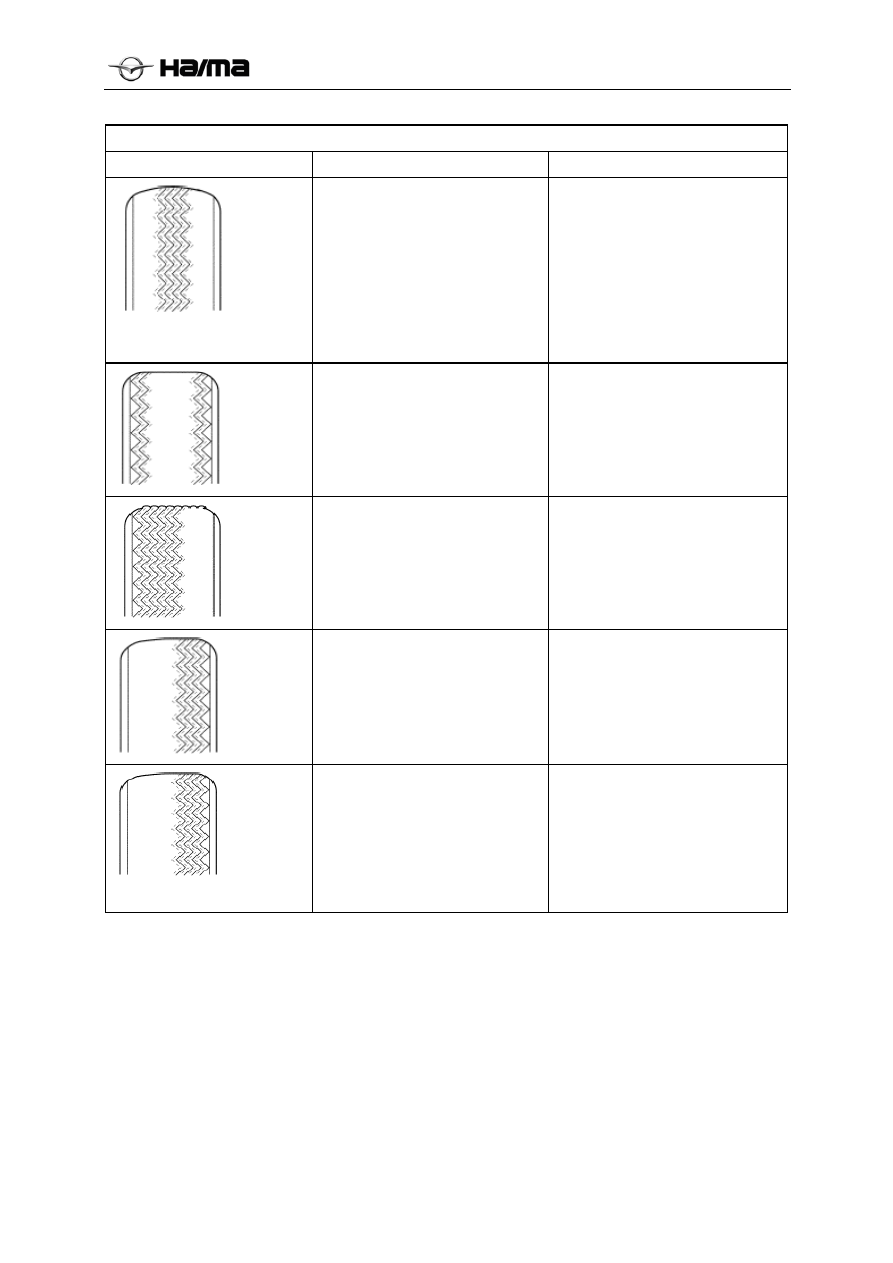Haima S5. Chassis System. Service Manual - part 2

Wheels and tires 2C-5
Irregular or excessive wears of tire
Fault
Possible causes
Corrective measures
●
Overlow tire pressure
●
Improper tire rotation
●
Adjust the tire pressure.
●
Rotate the tire.
●
Overhigh tire pressure
●
Improper tire rotation
●
Adjust the tire pressure.
●
Rotate the tire.
●
Improper toe-in
●
Adjust the toe-in.
●
Reverse toe-in
●
Adjust the toe-in.
●
Improper kingpin caster angle
or improper front-wheel
camber
●
Suspension failure
●
Improper wheel balance
●
Improper tire rotation
●
Check the steering knuckle,
control connecting rod, drive
shaft and suspension. Replace
if necessary.
●
Adjust the balance of wheel.
●
Rotate the tire.